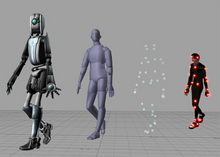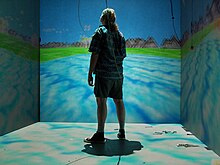This article needs additional citations for verification. (September 2017) |
| Three-dimensional (3D) computer graphics |
|---|
 |
| Fundamentals |
| Primary uses |
| Related topics |



Real-time computer graphics or real-time rendering is the sub-field of computer graphics focused on producing and analyzing images in real time. The term can refer to anything from rendering an application's graphical user interface (GUI) to real-time image analysis, but is most often used in reference to interactive 3D computer graphics, typically using a graphics processing unit (GPU). One example of this concept is a video game that rapidly renders changing 3D environments to produce an illusion of motion.
Computers have been capable of generating 2D images such as simple lines, images and polygons in real time since their invention. However, quickly rendering detailed 3D objects is a daunting task for traditional Von Neumann architecture-based systems. An early workaround to this problem was the use of sprites, 2D images that could imitate 3D graphics.
Different techniques for rendering now exist, such as ray-tracing and rasterization. Using these techniques and advanced hardware, computers can now render images quickly enough to create the illusion of motion while simultaneously accepting user input. This means that the user can respond to rendered images in real time, producing an interactive experience.